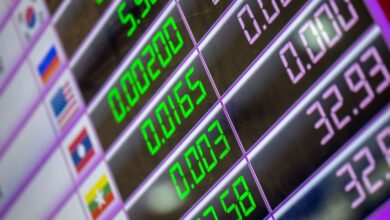Taiwan Semiconductor Manufacturing Co. Faces New Challenges Amid Global Tariff Changes

$2330.TW
In recent developments, Taiwan Semiconductor Manufacturing Company Limited (NYSE:TSM), a leader in the global semiconductor industry, has encountered significant challenges due to newly imposed tariffs. The company, which holds a dominant 50% market share in the global foundry sector, is navigating through turbulent economic waters as geopolitical tensions reshape the landscape of international trade.
On April 9, 2025, the US government implemented a 32% tariff on Taiwanese imports, a move that directly impacts TSMC’s operations. This tariff is part of a broader strategy by the US to encourage domestic production and reduce reliance on foreign semiconductor manufacturing. The implications of this tariff are profound, as TSMC is a critical supplier to several US technology giants, including Apple and Nvidia, which rely on its advanced chip technologies.
For instance, China has set a 34% tariff on US goods in response, affecting the entire supply chain of technology products, from raw materials to finished goods. This tit-for-tat tariff exchange has heightened the uncertainties in the global economic environment, posing a risk to ongoing and future investments in semiconductor manufacturing.
Financially, TSMC reported a robust revenue of $26.73 billion for Q4 2024, yet the company’s stock price experienced a downturn shortly after the tariff announcements. This decline reflects market concerns over the potential increase in production costs and the disruption of global supply chains. The company previously announced a significant $100 billion investment plan to expand its manufacturing presence in the United States. The strategic move to bolster US operations is aligned with the US CHIPS Act, which offers financial incentives for semiconductor manufacturers to localize their production.
By expanding its US footprint, TSMC not only aims to comply with the new tariff regulations but also seeks to secure a more stable position in the global market amid ongoing geopolitical tensions. Its adapt to these changes while maintaining its market leadership will be crucial in determining its future success in an increasingly protectionist world.
**DISCLAIMER: THIS CONTENT IS FOR INFORMATIONAL PURPOSES ONLY AND SHOULD NOT BE INTERPRETED AS INVESTMENT ADVICE. INVESTING INVOLVES RISK, INCLUDING THE POTENTIAL LOSS OF PRINCIPAL. READERS ARE ENCOURAGED TO CONDUCT THEIR OWN RESEARCH AND CONSULT WITH A QUALIFIED FINANCIAL ADVISOR BEFORE MAKING ANY INVESTMENT DECISIONS.**
